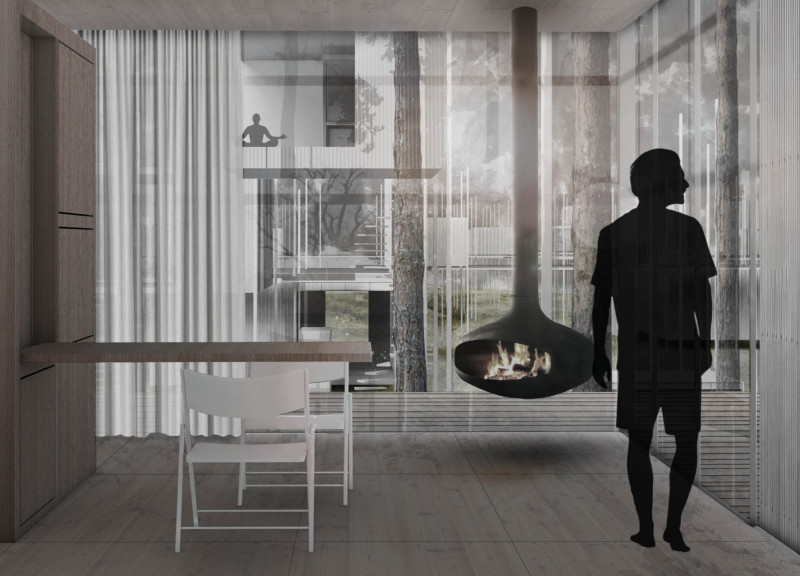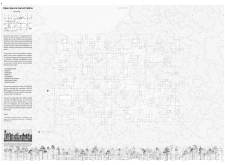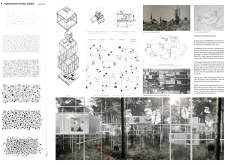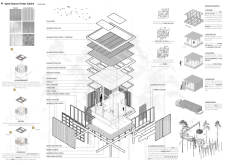5 key facts about this project
The project explores the concept of "open source," focusing on the complex relationship between society and nature. Situated in a natural environment, it aims to create spaces for inspiration and meditation. The design is adaptable, promoting a way of living that aligns with the surrounding landscape. Flexibility and community engagement are at the core, allowing the spaces to evolve according to the needs of the users.
Design Framework
The approach is modular and flexible, featuring interconnected areas such as halls, galleries, libraries, living rooms, meditation rooms, shared kitchens, and ateliers. This layout supports a variety of activities and encourages social interaction. At the same time, it provides private areas for personal reflection and quiet moments.
Materiality and Structure
Natural pine wood and galvanized steel sheets are key materials in the design. These materials contribute to the building's strength and aesthetic appeal. The use of layered roofs and floors helps regulate indoor temperatures, offering protection from external weather conditions. Safety glass is incorporated into the facades, allowing natural light to flood the interiors while creating a strong connection to the outdoor environment.
Construction Methodology
Built in a factory setting, the construction process emphasizes precision and reduces environmental impact on site. The design consists of pillars and beams that ensure stability. The exterior features mobile panels made of corrugated galvanized steel, which control light and privacy. This method of construction also streamlines logistics and enhances the overall expression of the architecture.
Sustainable Features
Solar panels are integrated into the design, addressing energy efficiency and promoting self-sufficiency. The project highlights a commitment to sustainability with features that are ecologically sensitive. It reflects a contemporary understanding of modular living, which prioritizes resource efficiency and environmental harmony.
One notable design element is the extensive use of glass, which facilitates a strong connection between indoor and outdoor spaces. This incorporation of light creates an atmosphere that invites users to engage with their natural surroundings, enhancing the overall experience of the space.





















































